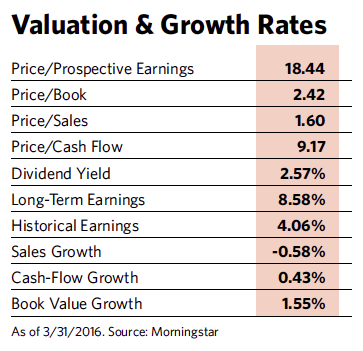The strategy has also produced much less volatility than the index over the long term. Its standard deviation has averaged 9.79%, while the index has averaged 15.49% and the balanced portfolio 9.31%. The strategy’s 0.64 Sharpe ratio (a measure of risk-adjusted returns) exceeds the ratios of the index and the balanced portfolios by a considerable margin.

The approach appeals to clients of all ages, Swan says. “For people in retirement, a 50% loss in a portfolio can be devastating. And for people in the accumulation phase, having a large variance in return brings portfolio returns down over time.” He adds that while the strategy was designed as a substitute for a balanced stock and bond portfolio, even a 20% allocation to the fund can have a meaningful impact on overall volatility and returns.
Before founding what would later become Swan Global Investments in 1996, Swan was a CPA and senior manager for KPMG’s Financial Services Group, primarily working with insurance companies and risk managers. That experience taught him firsthand how insurance companies manage risk, and how it might apply to the investment world through options trading.
“I’ve been an avid investor since I was 14,” he says. “But it wasn’t until I worked at KPMG that I recognized the benefit of managing the risk side with options. It’s like a lightbulb went on.”
Swan developed the methodology as a way to protect clients from large losses while still letting them enjoy a decent dose of the market’s upside. He started out using a market-cap-weighted exchange-traded fund that follows the S&P 500, but switched to equal weighting in 2012 to avoid becoming too heavily invested in overheated sectors.
Growth progressed slowly during the firm’s early years. It wasn’t until the market crash of 2008—over a decade after he set up shop—that investors began to recognize the value of not losing money as well as the pitfalls of traditional diversification. By 2013, his assets under management had reached $1 billion.

Today, Swan Global Investments has nearly $3 billion in assets under management and 40 employees. One of them is Randy’s brother Rob, a former flight-test engineer and software developer who handles the technology and trading end of the business. The pair manage the strategy for numerous asset types, such as large-cap stocks, emerging market stocks, foreign developed stocks, small-cap stocks, long-term bonds and gold. Besides the Swan Defined Risk Fund, the firm has other mutual funds covering small caps, foreign developed stocks and emerging markets, and these also employ his process.
Two years ago, Randy Swan established an office in Puerto Rico, where he now works with five other employees and enjoys sailing and fishing in his spare time. Rob continues to supervise the Durango office. The company also has an office in Tampa, Fla., with about 10 employees.
Swan sees the untraditional office setup and his staff’s backgrounds as a reflection of the firm’s unusual way of doing things. “We like to call Durango the business capital of southwest Colorado,” he says. “Most of us come from a math or science background, rather than finance. I think it all plays into why we think outside the box.”
Another point of departure for Swan is his open attitude toward bear markets, when his funds tend to shine. “We don’t need the Dow to hit new highs to reach our goals and objectives,” he says. “In fact, we’d prefer a market selloff within the next two or three years.”
Although he won’t predict whether that will happen, he sees it as a distinct possibility for several reasons. There hasn’t been a major downturn in over seven years, so a true bear market is overdue. Even though the Federal Reserve and banks around the world have kept interest rates at historic lows for years, economic growth remains anemic. And the federal budget deficit continues to loom.
If things do head south, he believes, as he has for nearly 20 years, that traditional diversification won’t provide much of a safety net. “Stock dividends, which historically have made up a large part of total return, are extremely low. And fixed-income, the part of the portfolio that’s supposed to provide some protection against equity risk, won’t be able to hold up its end of the bargain if interest rates rise. That’s not a good combination.”








